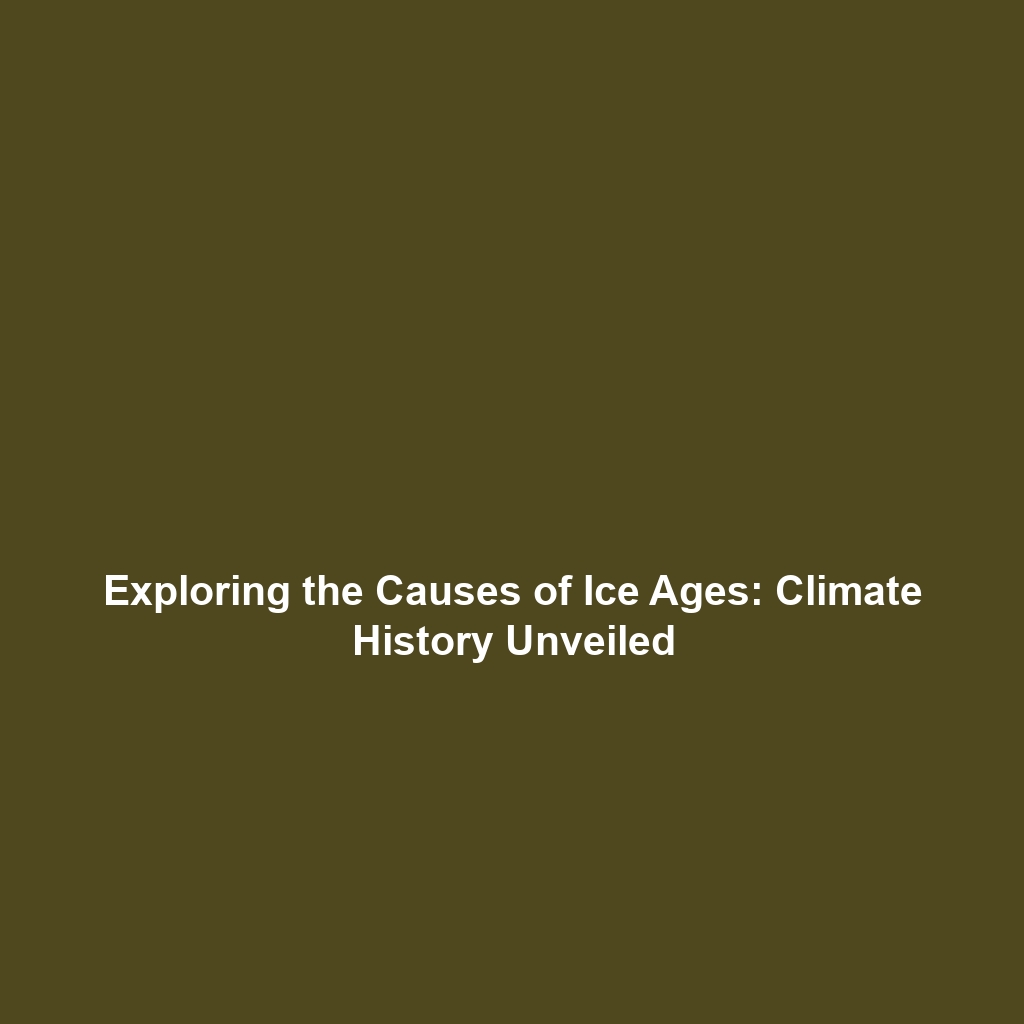Causes of Ice Ages: Understanding a Key Element in Climate History
The causes of ice ages represent a critical area of study within climate history, as they illuminate the intricate interactions between Earth’s climate systems. Understanding the mechanisms that drive these significant cold periods is crucial not only for grasping our planet’s past but also for predicting future climatic shifts. This article delves into the primary factors contributing to ice ages, their implications for climate patterns, and their relevance in the broader context of climate history.
Key Concepts Behind Ice Ages
Ice ages are defined as prolonged periods of significant cooling on Earth, characterized by the expansion of ice sheets and glaciers. The complex interplay of various factors contributes to their onset and duration:
1. Milankovitch Cycles
Milankovitch cycles refer to the long-term variations in Earth’s orbit and axial tilt, affecting solar radiation distribution. These cycles play a critical role in the timing of glacial and interglacial periods.
2. Plate Tectonics
The movement of tectonic plates alters geographical features, influencing ocean currents and climate patterns. Changes in landmass configuration can lead to significant climate shifts that promote ice age conditions.
3. Atmospheric Composition
Variations in greenhouse gas concentrations, particularly carbon dioxide and methane, have profound effects on Earth’s temperature. During ice ages, lower concentrations of these gases contribute to cooler global temperatures.
Applications and Real-World Uses
The study of ice ages not only enhances our understanding of climate history but also has practical applications in various fields:
- How Causes of Ice Ages Inform Climate Models: Research on ice ages aids in developing accurate climate models, allowing scientists to predict future climate scenarios effectively.
- Applications in Paleoclimatology: Insights from past ice ages are crucial for paleoclimatologists in reconstructing Earth’s climatic history and understanding natural climate variability.
- Policy Formulation: Understanding ice ages supports policymakers in creating strategies to mitigate climate change impacts by highlighting historical patterns of climate resilience.
Current Challenges in Studying Ice Ages
Despite advancements, several challenges persist in the study of ice ages within climate history:
- Data Limitations: Accessing accurate and comprehensive data from previous ice ages can be difficult, affecting analyses.
- Complex Interactions: The interplay of various climate factors is complex, making it challenging to pinpoint exact causes of ice ages.
- Technological Constraints: Current technologies may not be adequate to fully model the intricacies of Earth’s systems in relation to ice age dynamics.
Future Research and Innovations
As scientific understanding evolves, several future research directions and innovations are on the horizon:
- Enhanced Climate Models: Next-generation climate models incorporating advanced computational technologies are expected to provide deeper insights into the causes and effects of ice ages.
- New Proxy Data: Future studies may utilize innovative proxy data sources to achieve a more accurate reconstruction of Earth’s climates throughout history.
- Interdisciplinary Approaches: Collaborations between geologists, climatologists, and data scientists could lead to breakthroughs in understanding ice age phenomena.
Conclusion
In summary, the causes of ice ages are integral to the understanding of climate history and carry significant implications for our future climate predictions. By exploring the scientific concepts behind these phenomena, their real-world applications, and current challenges, we can better comprehend the patterns that shape Earth’s climate. For further reading, explore our articles on paleoclimate data analysis and future climate scenarios.

Leave a Reply